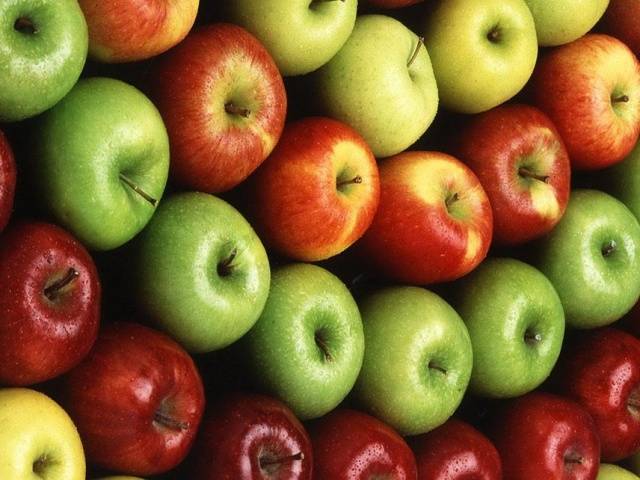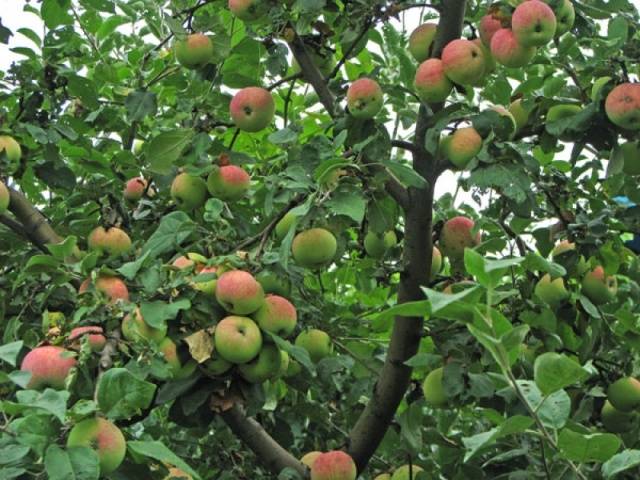Content
It is difficult to imagine a garden in which at least one would not grow Apple tree. Probably, Russian residents love these fruit trees, first of all, for the duration of their fruiting: summer, autumn and winter The apple trees bear their fruit one by one. Thus, the summer resident and his family can enjoy vitamin-rich and tasty fruits all year round. Specifically, summer apple varieties have both advantages and some disadvantages. Such varieties are valued for their early ripening - already in July you can enjoy fresh fruit from your own garden. However, there are also disadvantages - for example, summer apples cannot be stored for a long time.
About the best summer apple varieties with photo and description Each type will be discussed in this article. The classification of summer varieties will also be described here, and the features of all groups will be listed.
Features of early ripening species
Summer varieties of apple trees are those varieties whose fruit ripening begins in mid-July and ends in the last days of August. The peculiarity of such apples is that they are intended for fresh consumption.Of course, you can make puree or juice from the fruits, but they will not be stored - a maximum of a month, and then in the bottom drawer of the refrigerator.
A summer resident who wants to have a summer apple tree in his garden should remember one more factor. The flowering dates of neighboring trees of the same type (that is, apple trees) should not coincide. That is why it is not recommended to plant two summer varieties next to each other or to plant a summer apple tree close to an autumn one.
In the event that the flowering periods of neighboring trees overlap each other, cross-pollination will occur, and the apple tree will no longer have the specific characteristics of the variety. This is how breeders act when they are trying to get a new hybrid, but ordinary summer residents do not need cross-pollination of trees.
Experts also note the increased winter hardiness of summer varieties of apples. This fact is explained precisely by early fruiting: having given the harvest in mid-to-late summer, the trees have enough time to prepare before wintering. But there is also a flip side to the coin: in regions with frequent return frosts, the buds of summer apple trees often freeze out, as they swell first.
Early summer species
Early summer apple trees are those whose fruits begin to ripen in the first ten days of July. Such varieties have not become very widespread in Russia, since in a temperate climate not only the buds, but also the flowers of apple trees often suffer from spring frosts.
In any case, for an early summer apple tree you should choose a well-lit place that is located on a hill. It’s great if this is an area on the south side of the garden, reliably protected from cold winds and high humidity (fog, melt water).
The names of the most popular types with early ripening periods will be given below.
Aport White
This variety is very common in Kuban. Apple trees have excellent winter hardiness, do not freeze, and are resistant to scab. The trees begin to bear fruit 5-6 years after planting and are considered “long-lived”. The fruits ripen early, but it is not recommended to pick them before the end of July, since apples ripen better on the branches, becoming sweeter and tastier.
The big advantage of this variety is that the fruit can be stored until mid-September. And with proper care, trees can bear fruit every year. The fruits have a slightly elongated or conical shape, their skin is thin and green. The average weight of an Aport apple is about 60-70 grams.
The summer species is not picky about the composition of the soil, pleases with high and stable yields, and rarely gets sick. The summer resident may be upset by the unsuitability of the fruit for transportation and the rather ordinary taste of the fruit.
Astrakhan Red
A very unpretentious variety of apple trees that can withstand severe frosts, winds, poor soil quality, high humidity or severe drought. Trees enter the fruiting phase 5-6 years after planting or rootstock. The trees produce a harvest every year.
Apples are considered table apples and are most often consumed fresh. One cannot help but rejoice at the suitability of this summer variety for transportation - if the fruits are picked unripe, they will not bruise and brown on the way.
Summer apples ripen very early - until mid-July.The fruits are medium or small in size, their skin is red and the flesh is white or greenish.
July
Another sweet early summer apple, ripening in the first ten days of July. The trees have good winter hardiness, pleasing appearance and high yield. The fruits are arranged in clusters on the branches; the fruits themselves are very beautiful.
Apples are medium and large in size, weighing from 120 to 190 grams. The color of the fruit is interesting, slightly blurred, and has a beautiful blush. The taste characteristics of the fruit are very high, which is rare for early summer species.
Summer views
The group with average ripening periods is usually called summer varieties. This includes apple trees that enter the fruiting phase from mid-July to the tenth of August.
White Filling (Paping)
This summer variety appeared in private gardens in the Baltic states, but became very widespread in dachas and gardens throughout Russia. Trees begin to bear fruit 7-8 years after planting, and their “life” often exceeds 45 years.
Papirovka apples are medium in size, have a glossy greenish-white skin, and barely noticeable ribbing on the surface of the fruit. The taste and aroma of these summer fruits are very good, but... storage they can’t stand it – they become “woolly” and tasteless.
July Chernenko
These apples ripen in late July and early August. The fruits are medium-sized (up to 180 grams), round, with slight ribbing.The surface of the fruit is painted in a juicy green color, there is a cherry blush, making the fruit especially attractive and colorful.
The pulp of the July apple is very tender, but its taste quickly deteriorates when stored for more than 10-12 days.
Quinty
Summer apple tree of Canadian origin. Recommended by the State Register for the Central and North Caucasus regions. The fruits of this variety ripen in the first ten days of August. The weight of the fruit is average, there is no ribbing on the surface, the peel is yellow-green, and there is a large crimson spot on the side.
The taste of Quinti apples is very pleasant, sweet and sour, with a strong aroma. A freshly picked apple has greenish flesh; after a short storage, it acquires a white tint and becomes very juicy.
Late-ripening species
Late summer apples ripen in the last days of August. A distinctive feature of this group of apple trees is the longer storage of fruits and the suitability of the crop for transportation.
Melba
A variety of Canadian selection obtained by crossing the famous McIntosh apple tree. Harvesting of these apples begins around August 15, and fruiting ends at the end of September.
The fruits are round, slightly elongated, medium in size - about 150-180 grams. The peel of the apples is dense, light green in color, and covered with a slight coating.Fully ripe fruits are easily distinguished by their yellowed skin and a pronounced red spot on the side.
The taste of the fruit Apple trees Melba sweet and sour, juicy pulp, rich aroma. The tree begins to bear fruit 3-4 years after planting.
Beauty of the Garden
The fruits of the summer apple tree ripen after August 20th. The shape of the fruit is round, slightly elongated, with slight ribbing. The peel of unripe apples is white; after ripening, pink stripes appear on it, and the undertone becomes more yellow or beige.
The fruits do not tolerate transportation; they can be stored for no longer than two weeks. The taste is excellent, the flesh is juicy, the aroma is pronounced.
New varieties
Old varieties summer ripening apple trees are gradually being replaced by more modern developments of breeders. New apple trees show greater winter hardiness, immunity to scab and other diseases, good productivity, and unpretentiousness to the climate. And most importantly, they have even earlier ripening periods.
Gaia
This high-yielding variety of summer apple trees was registered only two years ago. Fruit ripening is early; fruits ripen en masse in late July.
The fruits are round in shape, medium in size, have a dense yellow-green peel and a pronounced blush. The taste of the variety is very good, the pulp is tender, fine-grained, and the aroma is very rich.
Summer Red
Summer apple with later ripening dates - early August. The trees are powerful and grow very quickly.The fruits are large (on average 220 grams), ovoid in shape, and almost the same size.
The skin is dense, yellow-green in color, with a scarlet blush and slight ribbing. The taste is good, sweet and sour, very refreshing.
Early columnar species
Summer varieties of columnar apple trees cannot be ignored, because this type of fruit tree is becoming increasingly popular. The main advantage of a columnar apple tree is its compactness, which allows you to get a full harvest of apples even in a cramped garden.
The president
Russian type of columnar apple tree with summer ripening. The President is over forty years old, but it does not lose its relevance and is successfully grown in gardens and dachas across the country.
Apple trees are considered semi-dwarf, since their height rarely exceeds 200 cm. But the fruits are quite large - on average, about 180 grams. The shape of the fruit is flattened, the color is pale yellow, there is a pink-violet blush. The fruit has a good taste, the peel is thin.
The President's maturation begins at the end of August and continues until the second half of September.
Conclusion
Only the best summer varieties of apple trees are presented here; in fact, there are dozens and hundreds of such varieties. Although early-ripening apple trees are not as popular as autumn and winter varieties, they are successfully grown in most of the country. A big advantage of summer varieties is the early ripening of fruits, which allows you to saturate the body with fresh vitamins already in mid-summer.
Photos and descriptions of each summer species will help a novice gardener decide.






















